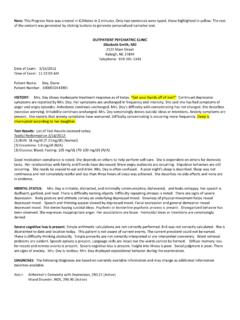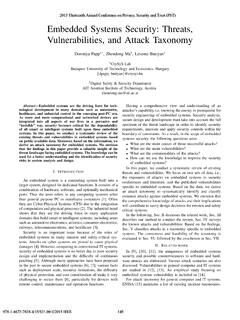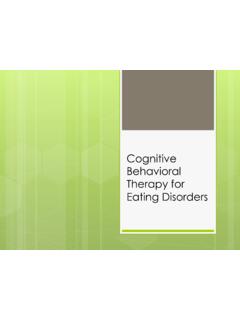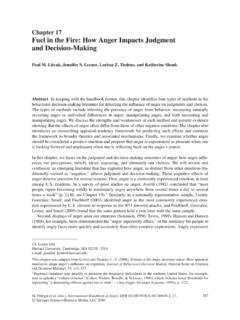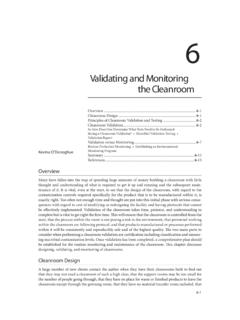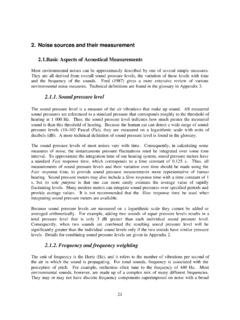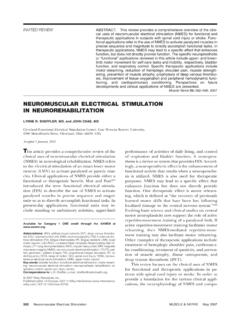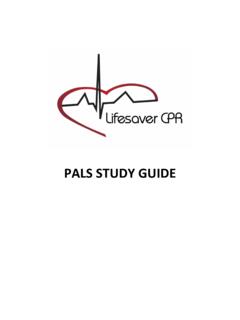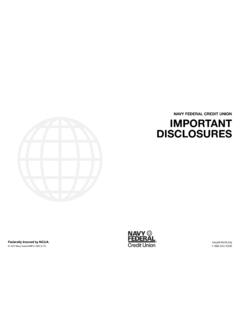Transcription of This sample inpatient substance abus e chart was created ...
1 This sample inpatient substance abuse chart was created in the ICAN otes Behavioral Health EHR. The only words typed when creating this chart are highlighted in yellow. All other text is generated using the ICAN otes button-driven content library. Holly Hill Residential Facility Date of Exam: 9/1/2015. Time of Exam: 8:35:55 AM. Patient Name: Jones, Sheila Patient Number: 1000010660967. Diagnoses: The following Diagnoses are based on currently available information and may change as additional information becomes available. Alcohol Withdrawal, with perceptual disturbances, (ICD-10) (Active). Opioid Use Disorder, severe, (ICD-10) (Active). Generalized Anxiety Disorder, (ICD-10) (Active). Chronic migraine without aura, intractable, with status migrainosus, (ICD-10) (Active). Dimension 1: INTOXICATION / WITHDRAWAL RISK RATING: 3, as evidenced by: Client tolerates and copes with withdrawal discomfort poorly.
2 Client has severe intoxication, such that the client endangers self or others, or intoxication has not abated with less intensive levels of services. Client displays severe signs and symptoms; or risk of severe, but manageable withdrawal; or withdrawal worsening despite detox at less intensive level. Information Re substance Abuse Received From: Ms. Jones Ms. Jones's Family Ms. Jones reports that her current relapse began with exposure to a small amount of the substance . Drugs Used: Ms. Jones uses the following substance : Alcohol The following pattern of use is described: *Alcohol is often taken in larger amounts or over a longer period than was intended. *There is a persistent desire or unsuccessful efforts to cut down or control alcohol use. *A great deal of time is spent in activities necessary to obtain alcohol, use alcohol, or recover from its effects.
3 *Craving, or strong desire or urge to use alcohol. *Recurrent alcohol use resulting in a failure to fulfill major role obligations at work, school, or home. *Recurrent alcohol use in situations in which it is physically hazardous. Tolerance: *A need for markedly increased amounts of alcohol to achieve intoxication or desired effect. Withdrawal Symptoms, as manifested by the following: *Alcohol is taken to relieve or avoid withdrawal symptoms. Impression: Ms. Jones has 6 or more symptoms/behaviors, therefore she is considered to have a Severe Alcohol Use Disorder. When Ms. Jones uses the substance she uses until she is completely intoxicated. Pattern of Use: Ms. Jones's substance use is continuous. She uses multiple times a day. Ms. Jones has been using this substance intermittently for years. Ms. Jones reports having used this substance last, hours ago. Ms.
4 Jones also uses the following substance : Oxycontin. Ms. Jones reports that her current relapse is, in part, due to stress. Details are as follows: When Ms. Jones uses substance the quantity used typically is about 10 pills per day. She administers this substance by mouth. Pattern of Use: Ms. Jones's substance use is episodic. She uses a few times a week. Ms. Jones has been using this substance since she was 32 after exposure to substance by her then boyfriend. She last used the substance about three days ago. Withdrawal Symptoms: Ms. Jones does describe at least one episode of withdrawal. The most recent occurred in the past year. Symptoms Included: *Agitation *Irritability *Joint Pain *Muscle Spasms *Sweating *Shaking/Tremors *Unable to Sleep CIWA: The Clinical Institute Withdrawal Assessment for alcohol (revised) is a tool for monitoring alcohol withdrawal.
5 The following subscale and total scores were today achieved by Ms. Jones: *Systolic Blood Pressure: 150. *Diastolic Blood Pressure: 90. *Pulse Rate: 100/min. *O2 Saturation: 97. *Respiration Rate: 22/min. *Mild nausea is reported. (1 point). *A moderate tremor is visible when arms extended. (4 points). *Moderately anxious or guarded, so anxiety is inferred. (4 points). *Somewhat more than normal activity is present. (1 point). *No sweat is visible. (0 points). *Oriented. (0 points). *Mild itching, pins and needles, burning, or numbness. (2 points). *No auditory disturbances. (0 points). *Visual disturbances are denied. (0 points). *Severe headache. (5 points). Total Score: 15+ (Scores of above 15 indicate severe withdrawal.) Actual score is 17. Dimension 2: BIOMEDICAL CONDITION/COMPLICATION RISK RATING: 2, as evidenced by: Client has some difficulty tolerating and coping with physical problems.
6 Problems may interfere with recovery and mental health treatment. This patient may neglect care of serious problems. Psychotropic Med History: Buspar: This medication was previously taken but is not currently taken. It was stopped because of its cost. Currently Prescribed Non Psychotropic Medications: Dilantin (compliant). Medical Screen: Potential Medical Emergency: (List all that are present): *Active withdrawal symptoms Infection or Disease: *Has had skin test for Details (date, results) are as follows: *Tested positive for *Chest X-ray completed annually. *Treatment for Completed: INH for six months. Dimension 3: MENTAL HEALTH RISK RATING: 3, as evidenced by: Client is functionally impaired during acute illness or from chronic symptoms, and illness interferes with treatment. Client has severe symptoms of emotional, behavioral, or cognitive problems, very poor impulse control and coping skills.
7 Client may have had thoughts of suicide or harm to others, including a plan and the means to carry out the plan. Global Assessment of Individual Needs: Ms. Jones reports that she has the following: *Depression: Now *Sleep Difficulty: Now *Suicidal: Within the Past Month *Listening To Instruction: Now *Victim of Abuse: Never Treatment History: Ms. Jones reports the following treatment history: Prior Psych Disorder: She has a history of anxiety symptoms. She suffered from anxiety symptoms when she was age 18. The episode of anxiety symptoms lasted two years. She was treated. Dimension 4: TREATMENT ACCEPTANCE RISK RATING: 3, as evidenced by: Client displays inconsistent compliance, minimal awareness of either the client's addiction or mental disorder, and is minimally cooperative. Defense Mechanisms: Ms. Jones minimizes the impact or severity of her illness.
8 Motivation for Change: Ms. Jones appears poorly motivated for change. Addictive Behaviors: Ms. Jones describes drug problems, as is elsewhere described. Ms. Jones describes alcohol problems, as are elsewhere described. Ms. Jones describes a history of an eating disorder. Self Help Groups Attended: None Elopement Risk: Ms. Jones's Elopement Risk is considered to be low. Dimension 5: RELAPSE POTENTIAL RISK RATING: 4, as evidenced by: No awareness of the negative impact of mental health problems or substance abuse. No coping skills to arrest mental health or addiction illnesses, or prevent relapse. Relapse History: Ms. Jones reports that this admission is relapse related. Relapse Triggers: Ms. Jones reports that current relapse began with her exposure to a small amount of alcohol. Relapse Frequency: She describes multiple previous relapses. Ms. Jones reports that her longest period of sobriety is about six months Dimension 6: RECOVERY ENVIRONMENT RISK RATING: 2, as evidenced by: Client has minimal recognition and understanding of relapse and recidivism issues and displays moderate vulnerability for further substance use or mental health problems.
9 Health and Behavior: Ms. Jones describes the following health and behavior practices: Tobacco: *Counseled regarding tobacco cessation *Counseling included consideration and discussion of nicotine replacement therapy. *Given advice about how to stop tobacco use Legal History: Ms. Jones's legal history is as follows: Arrests: Details are as follows: for DUI. Highest ASAM Risk Rating: RELAPSE POTENTIAL RISK RATING: 4. No awareness of the negative impact of mental health problems or substance abuse. No coping skills to arrest mental health or addiction illnesses, or prevent relapse. RECOMMENDATION: Send to Acute inpatient Setting. Less intensive treatment failed or is considered unsafe or not feasible. RECOMMENDATION: Send to Acute inpatient Setting. Serious deterioration in functioning requires 24 hr/day monitoring, for safety. RECOMMENDATION: Send to Acute inpatient Setting.
10 Medically monitored detoxification is needed. Joel Jones, LCSW. Electronically Signed By: Joel Jones, LCSW. On: 9/1/2015 8:36:04 AM. Holly Hill Residential Facility Date of Exam: 9/1/2015. Time of Exam: 9:35:55 AM. Patient Name: Jones, Sheila Patient Number: 1000010660967. CHEMICAL DEPENDENCY SPECIFIC BIO-PSYCHOSOCIAL ASSESSMENT. History: Ms. Jones is a 37 year old woman. Her chief complaint is, "I am so anxious all the time that I cannot stop drinking.". Circumstances Leading Up to Treatment: "I am a miserable mother to my twin girls and I really want to get my drinking and anxiety under control .". Information Re substance Abuse Received From: Ms. Jones: Ms. Jones reports that her current relapse is, in part, due to stress. Details are as follows: "I. am always anxious and drink to calm my nerves". Drug Used: Ms. Jones uses the following substance : Alcohol The following pattern of use is described: * Craving, or strong desire or urge to use alcohol.

